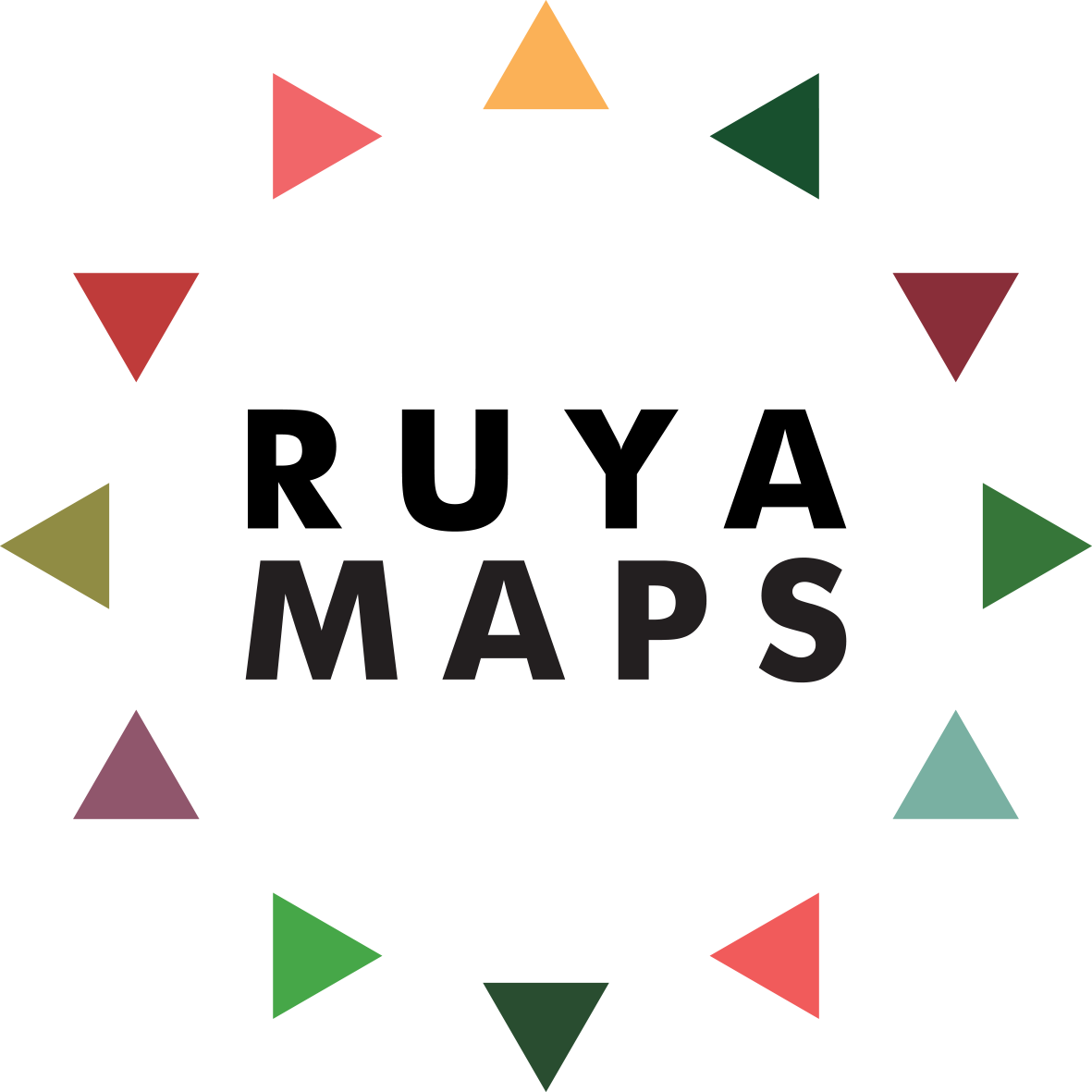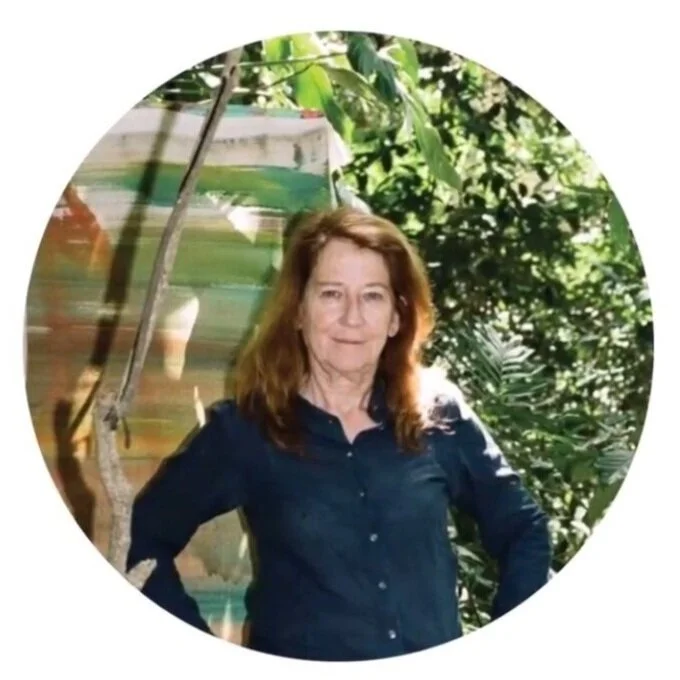Celebrating Women's History Month
To mark Women’s History Month 2021 RUYA MAPS has been sharing some of our favourite women artists from around the world.
Anita Dube
Indian (b 1958) Artist and Critic
Anita Dube was the only woman in the Indian Radical Painters and Sculptors Association, questioning institutional structure in modern India in her manifesto ‘Questions and Dialogues’ (1987). She curated the Kochi-Muziris Biennale in 2018.
‘Silence (Blood Wedding)’ (1997) shows Dube’s interest in materiality. The seminal work covered human bones in fabric and embellishments, lately she has been using language as her material.
‘Silence (Blood Wedding),’ 1997, Human bones covered in red velvet with beadings and lace, Image: Devi Art Foundation
Takako Saito
Japanese (b 1929) Conceptual Artist
Takako Saito was part of the avant garde movement in Tokyo and in the 1950s joined the Sōzō Biiku undo movement for artistic creative education. She moved to New York in the early 1960s where she was an influential member of the Fluxus Group. Her work then incorporated the senses and movement.
‘Smell Chess, Liquids’ (1965) and ‘Sound Chess’ (1977) show Takako Saito’s interest in her play. Her boxes were well known amongst her Fluxus peers, with the chess variations being the most well-regarded.
L-R: ‘A Part of 5 ounces’ from The Brecht Archives, 1998, 19 pieces, variable dimensions, Centre national des arts plastiques, Image: François Lauginie et B. Delanoë; ‘Sound Chess’, c. 1977, Thirty-two plastic boxes containing various objects, and typewritten sheet with pencil additions; ‘Smell Chess, Liquids’, c. 1965, Wood chessboard with thirty vial pieces, originally containing various liquids, and lid.
Kamala Ibrahim Ishaq
Sudanese (b 1939) Painter
Kamala Ibrahim Ishaq was one of the first women to graduate from the College of Fine Arts in Khartoum. After studying at the Royal College of Art in London she returned to bring a new perspective to the School of Khartoum. Along with two of her students she founded the Crystalist Group, writing a manifesto that championed pleasure and knowledge to challenge male-centric art.
‘Untitled - Zar’ and ‘Preparation of Incense - Zar Ceremony’ (2015) show her distinctive figural abstractions, groups of women and muted palette. She is influenced by spiritual practices; Zar is an exorcism rite performed by women in Central Sudan.
L-R: ‘Group of Women in a Trance Spiritual Procession’, 1984, Mixed media on canvas; ‘Untitled’, oil on canvas; ‘Preparation of Incense - Zar Ceremony’, 2015, oil on canvas.
Anna Boughiguian
Armenian (b 1946) Artist
Anna Boughiguian was born in Egypt and studied under Fouad Kamel. A nomadic artist, she has produced a diaristic body of work inspired by literature and sound. Ears are a regular motif as she lost her hearing early. Having not shown her work until she was 70, she has had a meteoric rise with exhibitions at Tate, the New Museum, and she has represented Armenia at the Venice Biennale.
She often uses paper cutouts to retell a story. In ‘Woven Winds. The Making of An Economy - Costly Commodities’ (2016) she traces the history of cotton, slavery and sea travel to show how global trade from the past affects the present’s power struggles.
L-R: ;The People's People’, 2017, exhibition view Galerie Sfeir-Semler, ‘Woven Winds: The making of an economy – costly commodities,’ 2016; ‘Untitled,’ 2016. Image: Sfeir-Semler Gallery, Hamburg/Beirut.
Della Wells
American (b 1951) Folk Artist
Della Wells is a self taught folk artist who began practicing in her 40s. She is known for her collage work but also creates paintings and handmade dolls. In 2004 she founded the advocacy group ‘African American Artists Beginning to Educate Americans About African Art.’ She also curates exhibitions, and believes in cities promoting local artists as collaborators.
Wells uses her own folklore; stories from her mother’s childhood in North Carolina in 1920-40s. She also uses symbols from the Civil Rights Movement as in ‘America Still Hides My Land’ and ‘Our Ancestors Remind Us That We Will Survive This America’ (2020).
L-R: ‘You Are Lovely’, 2017, Collage, Image: Portrait Society Gallery; ‘America Still Hides My Land’, Collage, Image: Adam Carr; ‘Our Ancestors Remind Us That We Will Survive This America’, 2020, Collage.
Pinaree Sanpitak
Thai (b 1961) Mixed Media Artist
Pinaree Sanpitak was one of the first Thai artists to combine multimedia and conceptual art in the 80s-90s. The motif of the female form is present through experiments in different media: paper, glass, candles, topiary, sound. Her emblematic breast imagery began with her show ‘Breast Works’ (1994) and links to Buddhism’s stupa (shrine) and offering bowl. Although recently she has come to use the hammock’s rhythmic form.
She associates the breast’s outline with nurture. In ‘Noon-Nom’ (2003) viewers surrendered themselves to a breast cushion installation. In ‘Breast Stupa Cookery’ (2005-) the participation comes from preparing food in breast shaped moulds.
L-R: ‘Breast Stupa Topiary’, 2013, edition 2 of 3 + 1 AP, stainless steel; ‘Noon–Nom’, 2001-2002, organza, synthetic fiber; ‘Breast Stupa Cookery’, 2005-, collaborative project, breast-shaped cooking molds, chocolate trays and cookie cutters, made from cast aluminum, glazed stoneware, glass, and foodgrade plastic.
Zarina Bhimji
Ugandan-Asian (b 1963) Photographer
Zarina Bhimji was born in Uganda to Asian parents, and moved to Britain after the expulsion of Uganda’s Asian population. In the 1980s she was part of the Black British Art Movement, bringing an affectivity to its focus on identity politics. Buildings are central to her work, often set in India and East Africa she researches their histories to create new images. She was nominated for the Turner Prize and has shown at Documenta.
‘Jangbar’ (2015) is a film that shows Bhimji’s approach to landscape through carefully constructed images. Her approach is underlined by extensive research as in ‘Yellow Patch’ (2011), about the Port of Mandvi where many Gujaratis left for Africa, which shows the bureaucracy of British colonialism.
L-R: ‘1822-Now’ exhibition, 1995, installation view, South London Gallery; ‘Jangbar’, 35mm colour film, single screen installation, 2015; ‘Yellow Patch’, 35mm colour film, HD transfer, Dolby 5.1 sound, 29min-43sec, single screen installation, 2011.
Vivian Suter
Argentine-Swiss (b 1949) Painter
Vivian Suter is a mixed media artist whose work not only gestures to the environment but makes it part of the process. Following the destruction of her art storage in Hurricane Stan, Suter decided not to fight nature and began laying her canvases in her Guatemalan garden to be finished. Suter was born to an Austrian mother, the collage artist Elisabeth Wild, who fled Nazi persecution. They often exhibit together and live on a former coffee plantation by Lake Atitlán.
‘Nisyros’ (2017) is characteristic of her abstract paintings, largely hung from ropes and presented as a collective whole. ‘Nisyros (Vivian’s Bed)’ (2016-17) is an installation that is intended to be edited and arranged according to the available space. It was first shown at Documenta 14 and uses oils, fish glue, volcanics and botanical matter
L-R: Installation View, ‘Vivian Suter,’ at Gladstone Gallery, New York, 2019, Image: Gladstone Gallery; ‘Nisyros’, 17 canvases, Installation View, Mudam, 2019; ‘Nisyros (Vivian’s bed).’ 2016-17, Oil, pigment, and fish glue on canvas and paper, and volcanics, earth, botanical matter, microorganisms, and wood, Image: Haupt & Binder.
Tatyana Nazarenko
Russian (b 1944) Painter
Tatyana Nazarenko is an Academician of the Russian Academy of Art and carries the honorary title of the National Artist of the Russian Federation. She came to prominence during the long 70s with historic images of war and non-canonical Biblical scenes. Her work moves between surrealism and social realism. A sense of loneliness amid a social masquerade often fills her work alongside an overwhelming weight of history.
The ‘Underpass’ Project (1990s)is a social commentary consisting of 120 cutout figures representing the distinct characters of Moscow’s underpasses. In ‘The Repast’ (1992) the artist pictures herself on a table surrounded by people-animals, continuing her interest in the carnivalesque.
L-R: ‘Entombment’, 2015, Oil on canvas; ‘Underpass’, installation. 1995-1996, Oil on plywood, timber; ‘The Repast’.' 1992, Oil on canvas.
Emese Benczúr
Hungarian (b 1969) Visual Artist
Emese Benczúr uses text as the basis of her work. The short slogans are given depth by the materials that uses to present them and the process of the piece’s creation. These three elements interrelate to form conceptually rich work. Her process often involved sewing, although lately she includes film in her practice. Thematically, she challenges time’s linearity by reflecting on the future - whether through her texts or processes.
‘Dolce Vita’ (2012) shows how Benczúr connects her materials to the message through its use of sweet wrappers. For the 2nd Manifesta she made ‘Should I Live To Be A Hundred’ (1997) hand embroidering ‘‘I think about the future’’ onto ribbons inscribed ‘‘day by day’’ for each day of her ideal lifespan.
L-R: ‘Try to See the World Through...’, Venice Biennale in 1999, mixed media; ‘Dolce Vita’, 2012, candy wrapper, plexi glass; ‘Day by Day I think about the Future’ (detail), 1998, prefab label, min. 600 cm. Images: Ani Molnar Gallery.
Teresa Margolles
Mexican (b 1963) Artist
Teresa Margolles trained as a forensic pathologist and worked as a mortician in Mexico City in the 90s. At the same time she founded the collective SEMEFO. Her performances, photography and sculpture made visible the unidentifiable bodies - victims of drug trafficking - that she worked with. Her art avoids exhibiting violence whilst incorporating the physical remnants of it. Margolles charges her materials with death to invoke accountability over corruption and social exclusion.
‘36 Cuerpos’ (2010) is made of the remains of thread used to sew up the bodies of victims of violent deaths during autopsies. ‘Flag I’ (2009) is soiled with blood and earth form having been used to clean sites of violence along the Mexico-US border, it was part of Margolles’ Mexico Pavilion at the Venice Biennale.
L-R: ‘La Promesa’, 2012, sculptural block made from the pulverized rubble of a demolished house in Ciudad Juárez, Mexique, 15 tons, Image: Museo Universitario Arte Contemporan; ‘36 Cuerpos’, 2010, installation, remains of threads; ‘Bandera I’, 2009, fabric, blood, earth and other substances, Image: Tate.
Laure Ghorayeb
Lebanese (b 1931) Artist
Laure Ghorayeb started out working as a cultural journalists, joining magazines like L’Orient, Le Jour, and Annahar. In the 1960s she developed the intricate ink drawings that she is known for. Featuring labyrinthine shapes and symbols that are filled with small scale details, her work has been described as illustration. It chronicles not only her own life, but that of her family and of events in Lebanon’s past like the Civil War that impacted her childhood.
‘Dessins de Poche’ (2017) shows how Ghorayeb re-evaluates scale through pocket sized canvases, each with a drawing that humorously interprets the quotidian. ‘Toi et Moi’ (c 2009) is a double self portrait with her son Mazen Kerbaj. Since (2006) they have collaborated, with Kerbaj creating silhouettes that Ghorayeb’s strokes fill in.
L-R: ‘Untitled’, 1968, Ink on paper, Image: Saradar Collection; ‘Dessins de poche’. 2017, Plexi glass + 120 drawings on canvas, Image: Beirut Art Residency; ‘Toi et Moi. Double Autoportrait’, 2009. China ink on cardboard, Image:Sharif Sehnaoui collection.
Graciela Iturbide
Mexican (b 1942) Photographer
Graciela Iturbide’s black and white analogue photographs document the co-existence of cultural rituals and modern life throughout Mexico, Ecuador, Venezuela and LA’s Mexican community. She was mentored by Manuel Álvarez Bravo and in (1978) was a founding member of the Mexican Council of Photography. Her fascination with birds, child mortality and the paraphernalia of religion pervades her work. The images are dignified portraits of lives that are often difficult.
Iturbide is guided by surprise when she takes an image. ‘Angel Woman’ (1979) shows a Seri indigenous woman heading into the Sonora desert with a boombox; she appears between worlds. ‘Our Lady of the Iguanas’ (1979) presents a regal Zapotec woman, Iturbide often photographs the Zapotec whose women hold positions of power.
L-R: ‘Primer Dia del Verano, Veracruz’, 1982, Gelatin silver photograph; ‘Mujer ángel, Desierto de Sonora, México’, 1979, gelatin silver print, Image: SFMOMA; ‘Nuestra Señora de las Iguanas’, Juchitán, Oaxaca, 1979. Gelatin silver photograph, Image: Brooklyn Museum.




















































